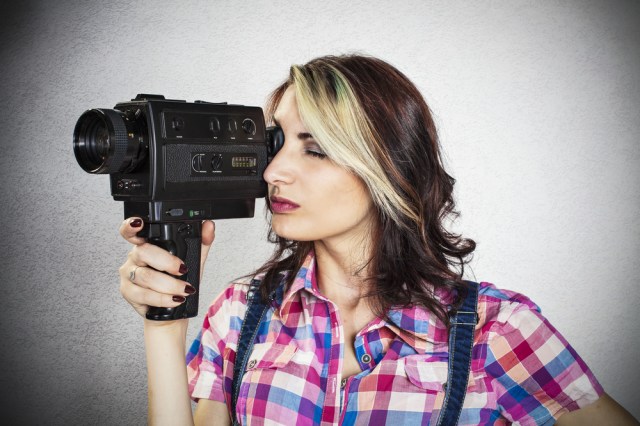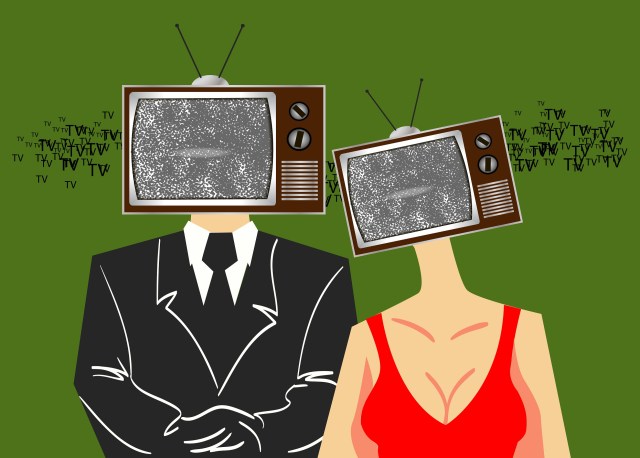San Diego State’s Center for the Study of Women in Television and Film has released its 17th annual “Boxed In” study tracking women’s representation and employment in prime-time television. Results were much as you’d expect given the patriarchy in full force all around us: women are underrepresented working behind the scenes, so women are also underrepresented on screen. And a lot of the representations that are shown are stereotyped, single-dimensional supporting roles — you know, exactly the way the patriarchy conditions all of us (but especially men) to view women.
From the report:
- In total, women comprised 25% of individuals in key behind-the-scenes roles on programs airing on the broadcast networks and cable channels, and available through Netflix in 2013-2014.This represents a decline of 1 percentage point from 2012-13.
- Specifically, women comprised 19% of creators (-4 percentage points from last year), 26% of writers (also -4%), 21% of executive producers (-3%), 13% of directors (+2%), 1% of directors of photography (up from 0%), and 16% of editors (same as last year).
- Females accounted for 40% of all speaking characters and 40% of major characters. Of all females shown on screen, 77% were white, 13% were African American, 4% were Latina, 4% were Asian, and 2% were some other race or ethnicity. 59% were in their 20s and 30s, whereas 59% of male characters were in their 30s and 40s.
- Only 41% of female characters played a work-related role (versus 66% of male characters), and only 35% of female characters had work-related goals (versus 52% of male characters).
- Female characters were more likely to play personal life-related roles — such life partner, dating partner, or parent — than male characters (43% vs. 24%). They were more likely to have the goal of helping others (15% vs. 9%).
Study data was drawn from one randomly selected episode from each series aired on the broadcast networks, cable (A&E, AMC, FX, History, TNT, USA, HBO, Showtime) and Netflix during 2013-2014.

Via Shutterstock.
As we’ve discussed previously, media creation is in many ways a self-perpetuating cycle — so long as gender-imbalanced content is profitable, it will continue to be made. Counterintuitively, this happens in spite of the fact that women-inclusive visual media is more profitable. Is it because TV moguls are choosing to sacrifice money and quality just to maintain the patriarchy’s status quo? Possibly (although that’s hard to prove). Is it because representation naturally reflects the demographics of its creators rather than its audience? Probably at least in part (after all, we see this effect in other fields). But I think there’s another factor at play here as well.
The thing about mass media is that it’s massive. TV teaches people what’s normal; it gives viewers context to understand the wider world. It’s certainly not the only form of information where people learn about about social norms, but traditional broadcast television has a huge cultural reach, and digital access only increases it. TV is a force that frames the worldview of audiences all around the world, even if they don’t agree with what’s being said. And do you know who has to watch tons of TV? TV creators.

Via Shutterstock.
Going back to the Boxed In report, let’s think about how women are being portrayed on TV. There aren’t that many of them. They’re shown in support roles. They’re seen at home rather than at work. They’re less career driven. They’re young, and they don’t speak that much. Sound familiar? Recall: this past year, women in TV comprised only 25% of individuals in key behind-the-scenes roles.
Do TV creators internalize the stereotypes portrayed on TV as “normal,” replicating it in their work environments and causing additional stereotyped portrayals? That’s a chicken-or-the-egg question of art imitating life imitating art. I don’t know the answer, and maybe it’s not even possible to do so. But it’s something to think about.
For now, I guess, I’ll just keep rewatching Orange Is The New Black? Over and over and over?

Hey for once something positive that came out San Diego State(well besides maybe Playmate we had a few years back). But, on a serious note, this a very interesting study. However, I do have a question, when the term woman is used, is there like a minimum age limit? Like would a 12 or 13 year old female be counted under women, or under teen/children?
Interesting question! I didn’t see that criteria in the report so I’m not sure. Are you thinking they just made the women so much younger that they got counted as children?
That could be possible. I know the children’s network have a few shows with female leading ladies, at least that’s what I gather from the commercials, but yeah. I know it’s not indicative of anything, but the fact they have girls(cis white mainly) as leads on children show has to say something, no?
And I wonder how much removing just a couple shows like OITNB would shift those numbers downward …
Yeah, it’s like how the GLAAD report was pretty positive w/r/t lesbian representation for about four years and then the l word ended and everything plummeted.
This is a really well written/researched informative article. I see what point you’re drawing from all the information. As I do agree on the fact that people of color (especially women of color) are not represented enough on television, I think it would be interesting to see the percentage of different colored people in the U.S. What I mean by that is, I’m wondering if more than 13% of american women are African American or what the accurate percentage is, and so on for latin women, asian women, and the other races or ethnicities. It also seems that characters who are people of color aren’t as often portrayed as main characters or even key roles but are more so added sometimes just as a token.. It’s really exciting when you do see a show that gives more of the storyline to characters who aren’t always white. But yeah, this was nice to read :)